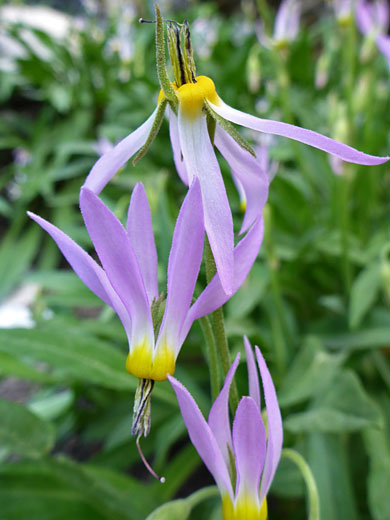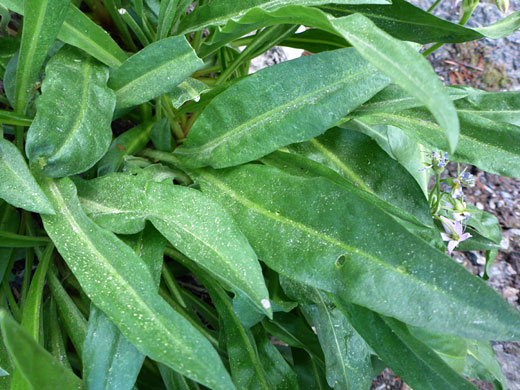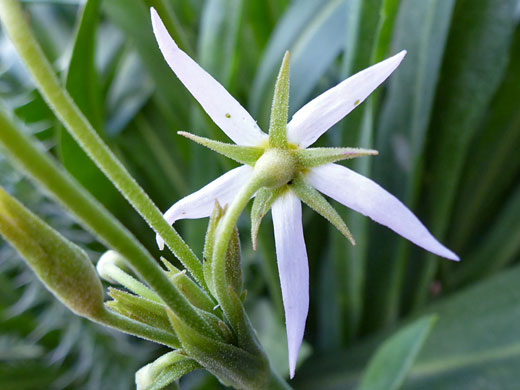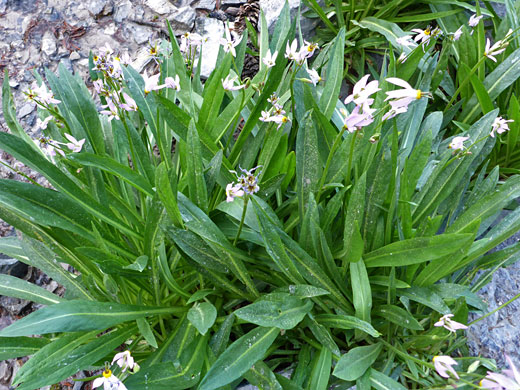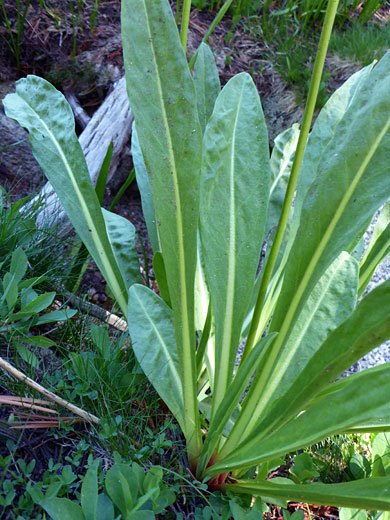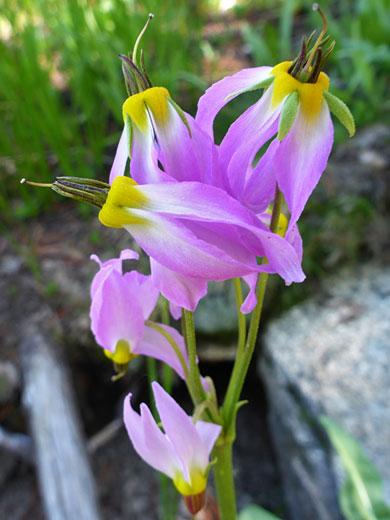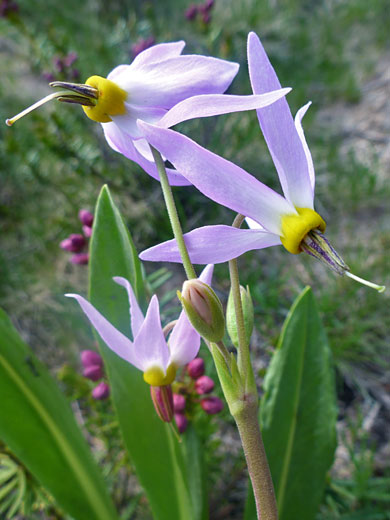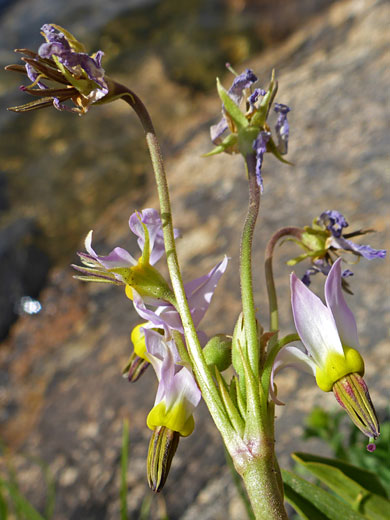Common name:
Scented shooting star
Family:
Scientific name:
Primula fragrans
Synonym:
Dodecatheon redolens
Main flower color:
Range:
East California, Nevada, and a small part of west Utah
Height:
Up to 30 inches
Habitat:
Streambanks, moist meadows, from 7,500 to 11,800 feet
Leaves:
Oblanceolate, stalked, tapered at the base, up to 20 inches long
Season:
June to September
Primula fragrans is most common along the southern Sierra Nevada, and is also found in other scattered locations including the San Bernardino and San Jacinto Mountains of southern California, and various mountain ranges in Nevada.
Leaves, stems, pedicels and calyces are covered by tiny glandular hairs; those on the pedicels are most obvious. The upwards-pointing leaves are clustered at the base, and are relatively long, up to half (or more) of the height of the stem. Leaves are attached by winged petioles.
Flowers are produced in clusters of up to 15; they have a pinkish corolla, deeply divided into five lobes (up to 1 inch long), angled back along the pedicel. Lobes are yellow at the base. Five dark purple anthers project forwards, their bases covered by the corolla tube. The style is longer than the anthers, and topped by a stigma that is noticeably enlarged; about twice the width of the style. Calyces are light green, divided about half way into five narrow, spreading lobes.
Leaves, stems, pedicels and calyces are covered by tiny glandular hairs; those on the pedicels are most obvious. The upwards-pointing leaves are clustered at the base, and are relatively long, up to half (or more) of the height of the stem. Leaves are attached by winged petioles.
Flowers are produced in clusters of up to 15; they have a pinkish corolla, deeply divided into five lobes (up to 1 inch long), angled back along the pedicel. Lobes are yellow at the base. Five dark purple anthers project forwards, their bases covered by the corolla tube. The style is longer than the anthers, and topped by a stigma that is noticeably enlarged; about twice the width of the style. Calyces are light green, divided about half way into five narrow, spreading lobes.
All Contents © Copyright The American Southwest | Comments and Questions | Contribute | Site Map


